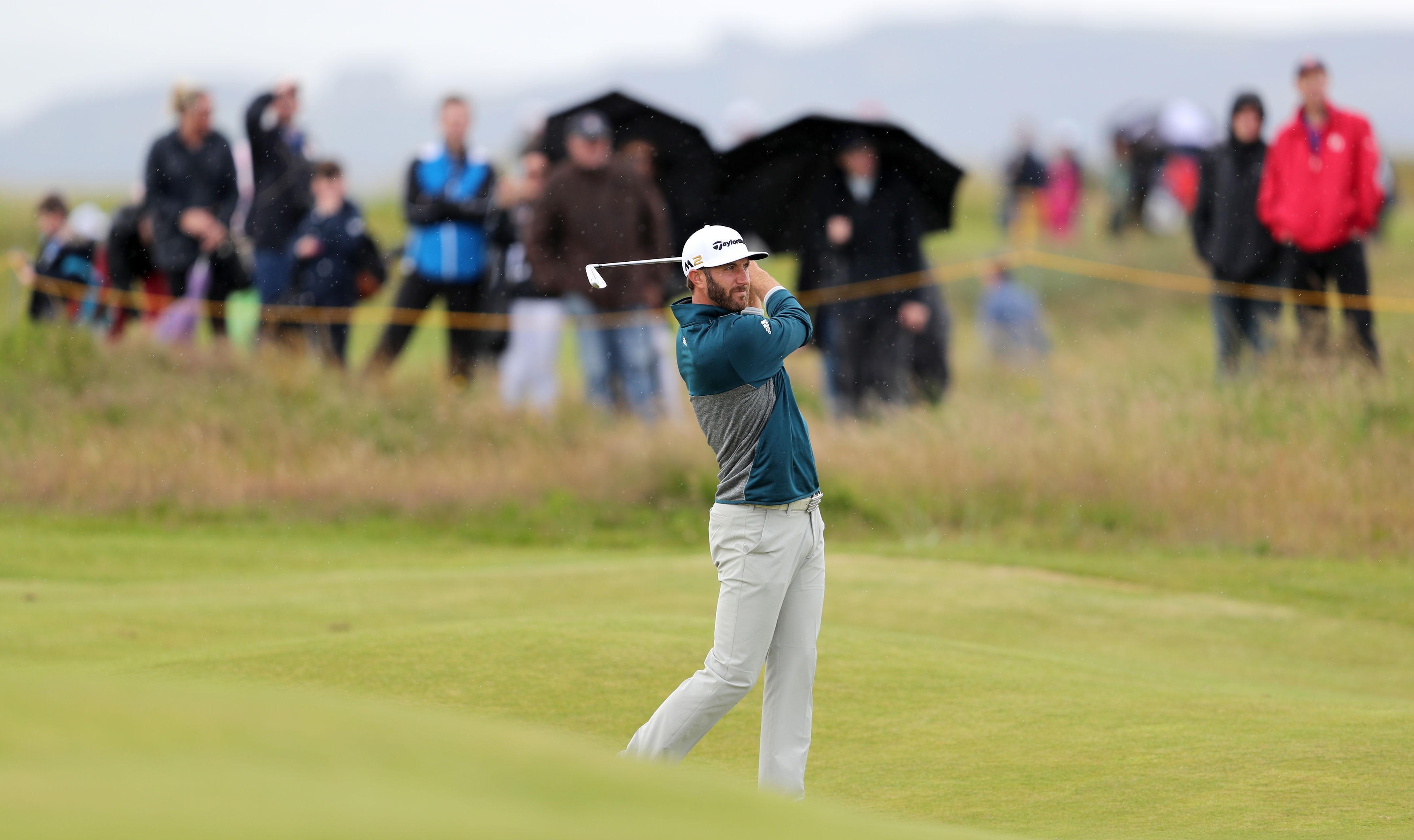The Open Championship’s rules procedures should prevent any repeat of the issues experienced by Dustin Johnson at Oakmont in the US Open, R&A chief executive Martin Slumbers believes.
Eventual winner Johnson was penalised for causing his ball to move early in his final round but not informed until the 12th tee and did not have it confirmed until he had completed his round.
“Speed and clarity” of the response to rules situations had been a primary focus for the last decade, said Slumbers.
“About ten years ago a fundamental change was made here, which was that the chief referee doesn’t leave this compound, where he has access to video replays in his office,” he said.
“All sorts of things can and generally do happen in this game, and it is the speed and the clarity with which we respond, which we’re very focused on, and have been for a number of years.
“I think it’s that function of us sitting here being able to respond and provide instructions back to the on course referees, is the difference in how we would deal with it.”
The Open had the best and most experienced rules officials from the R&A’s own staff and from the Tours around the world, he added.
“We had our rules meeting this morning and the process was discussed, clarified and reinforced,” added Slumbers. “I think we’re pretty good at getting that right. We’ve made some changes in the light of Oakmont and are being more prescriptive.”
The R&A have anticipated for a crowd of about 170,000 this week – in keeping with the numbers at Troon in 1997 and 2004 – and are “broadly on target”, added Slumbers. The organisers believe the first Open not live on the BBC for decades will prove successful, as the R&A “take control” of the TV pictures through new broadcasters Sky and NBC and put their brand on it as the USGA do with the US Open and Augusta do with the Masters.
“Our overriding concern/objective this week is to put on an absolute world-class experience for our players, our patrons, spectators and our viewers,” continued Slumbers.
“I think the package of opportunities to view the Open this year are broader than they’ve ever been. You’ve got from Sky through to NOW TV, to the two-hour highlights that will be run at primetime on the BBC.
“The way people consume sports is changing. It’s no longer people sitting and watching for six, seven hours, and the Open isn’t just a UK thing, it’s a global event and we look at it on a global reach as well.”
The R&A are also sticking to their policy of not making any commitment to return to Turnberry, owned by US presidential hopeful Donald Trump.
“Turnberry was and is part of the pool of nine courses for the Open Championship,” said Slumbers. “We have announced Opens out to 2019which will be pretty special as we go back to Portrush.
“We’re also very close to announcing 2020 and 2021, one of which will be in England, and one of which will be at St. Andrews. We don’t have to consider beyond that for a couple of years, and we’ll pick that up then.”
